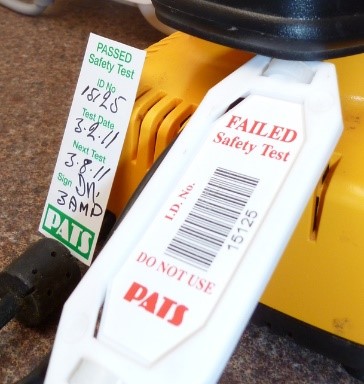A Portable Appliance Test (PAT) involves testing a movable electrical appliance to ensure it is safe to use, as required by the Electricity at Work Regulations 1989 and the Provision and Use of Work Equipment Regulations 1998.
New equipment should be CE marked* and supplied in a safe condition, and as such should not need a PAT test before use. However, the equipment should be visually checked prior to first use to ensure it is not damaged or dangerous. This visual check should be recorded.
 The frequency of PAT testing depends on the pattern of use and the conditions the appliance is being used in. There are broad guidelines based on the industry and application and we can help you devise a retest schedule based on our knowledge and expertise.
The frequency of PAT testing depends on the pattern of use and the conditions the appliance is being used in. There are broad guidelines based on the industry and application and we can help you devise a retest schedule based on our knowledge and expertise.
- DH Marine can carry out PAT testing on site, working flexibly with customers to suit their operational requirements.
- The PAT test involves unplugging the appliance in order to test it, which can be significantly disruptive. Our electricians can work out of hours to minimise this downtime if required.
- Appliances can be tested in our well-equipped and spacious electrical workshop.
- Should an appliance fail a PAT test, we can attempt to repair it, provided it is economically viable and are instructed to do so.
- We can dispose of failed items in line with the Waste Electrical and Electronic Equipment (WEEE) regulations.
- We will attach a PAT tag (unless an appliance is already tagged) and create a unique ID that will be used to record the appliance in our software.
- A PDF certificate will be issued for each appliance that states whether it has passed or failed together with any findings and a re-test date
- We can keep track of when appliances are due for re-testing and issue a reminder to you when that date approaches.
*The CE mark can be widely abused, especially on cheap Chinese imports, and this can help identify possible counterfeit and dangerous items.
 A genuine CE Mark:
A genuine CE Mark:
- Will have a noticeable space between the C and the E.
- The centre line on the letter E will be shorter than the ones above and below.
- Will be at least 5mm high, with the thickness of the lines in proportion to the overall size.
- Will be in close proximity to the name of the manufacturer or distributor.